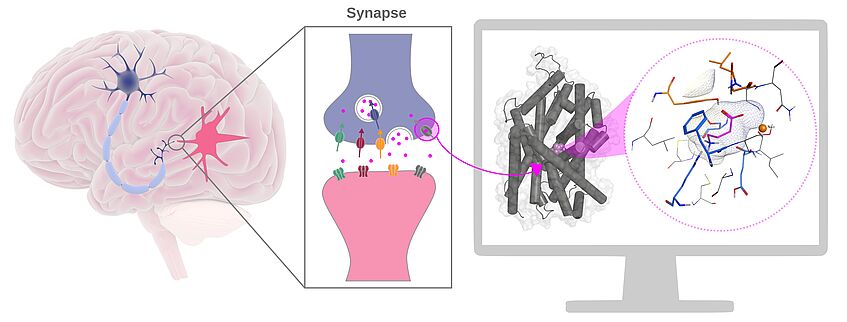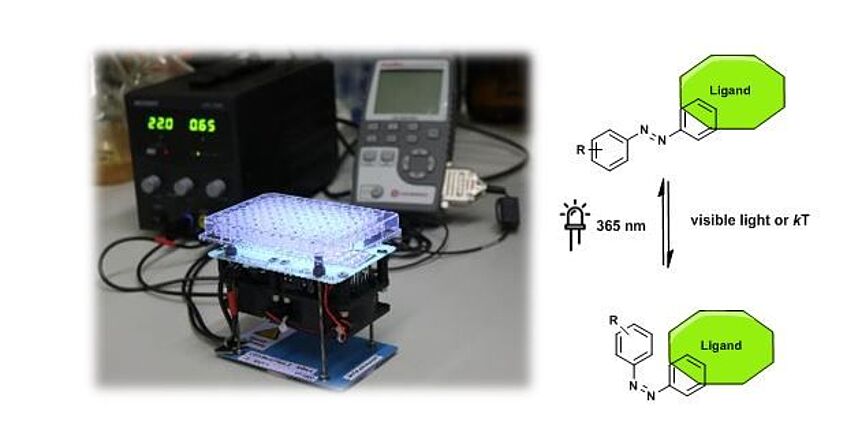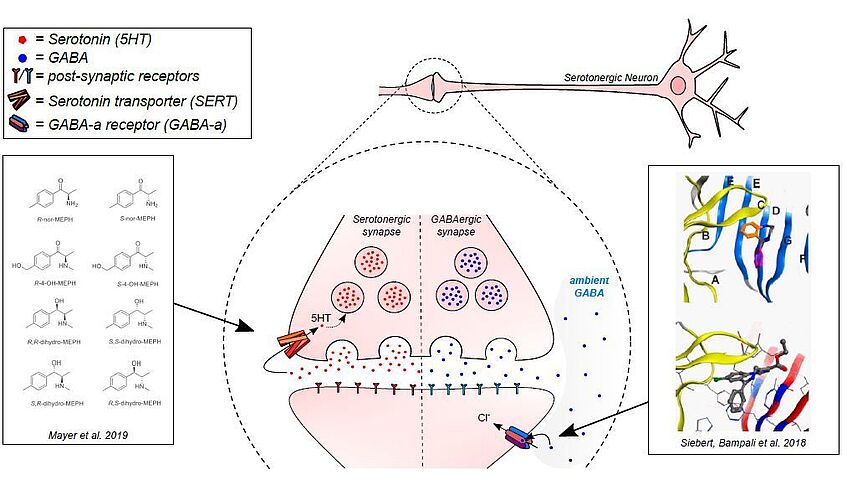Research Areas
Neurotransmitters

© Stefanie Kickinger
Neurotransmitters are messenger substances which in synapses can transmit the excitation from one nerve cell to another cell. Transport proteins ensure that these messenger substances are transported back out of the synaptic cleft back into the cell after the transmission of the excitation. As a result, the messengers are not only recycled, but also the transmission of excitement is stopped. Using computer-aided methods, the MolTag teams investigate the molecular transport mechanisms of these proteins and develop molecules that block the transport process and thus influence the excitation conduction. This research helps to better understand diseases like depression, schizophrenia or epilepsy.
Photopharmacology

© Marko D. Mihovilovic & Dominik Dreier
The Mihovilovic lab aims at providing pharmacological tool compounds that can we switched between active and non-active state by light stimulus. This offers the prospect to study biological effects by contactless interaction and has been successfully applied to target receptors in the central nervous system
"New Psychoactive Substances" (NPS)
At Meduni Vienna important docking sites for so-called "new psychoactive substances" (NPS) are being investigated in two participating working groups.

Center: Schematic representation of a synapse, with serotonin transporters and extrasynaptic GABA-A receptors in key positions for NPS effects. Left side shows structures from the paper by Felix Mayer (Neuropharmacology, 2019), on the right the docking of a benzodiazepine (Siebert, Bampali et al, ACS Chem. Biol.)
For the team around Harald Sitte psychostimulants are at the center of the work, the working group of Margot Ernst explores the exact docking positions of addictive benzodiazpines.
